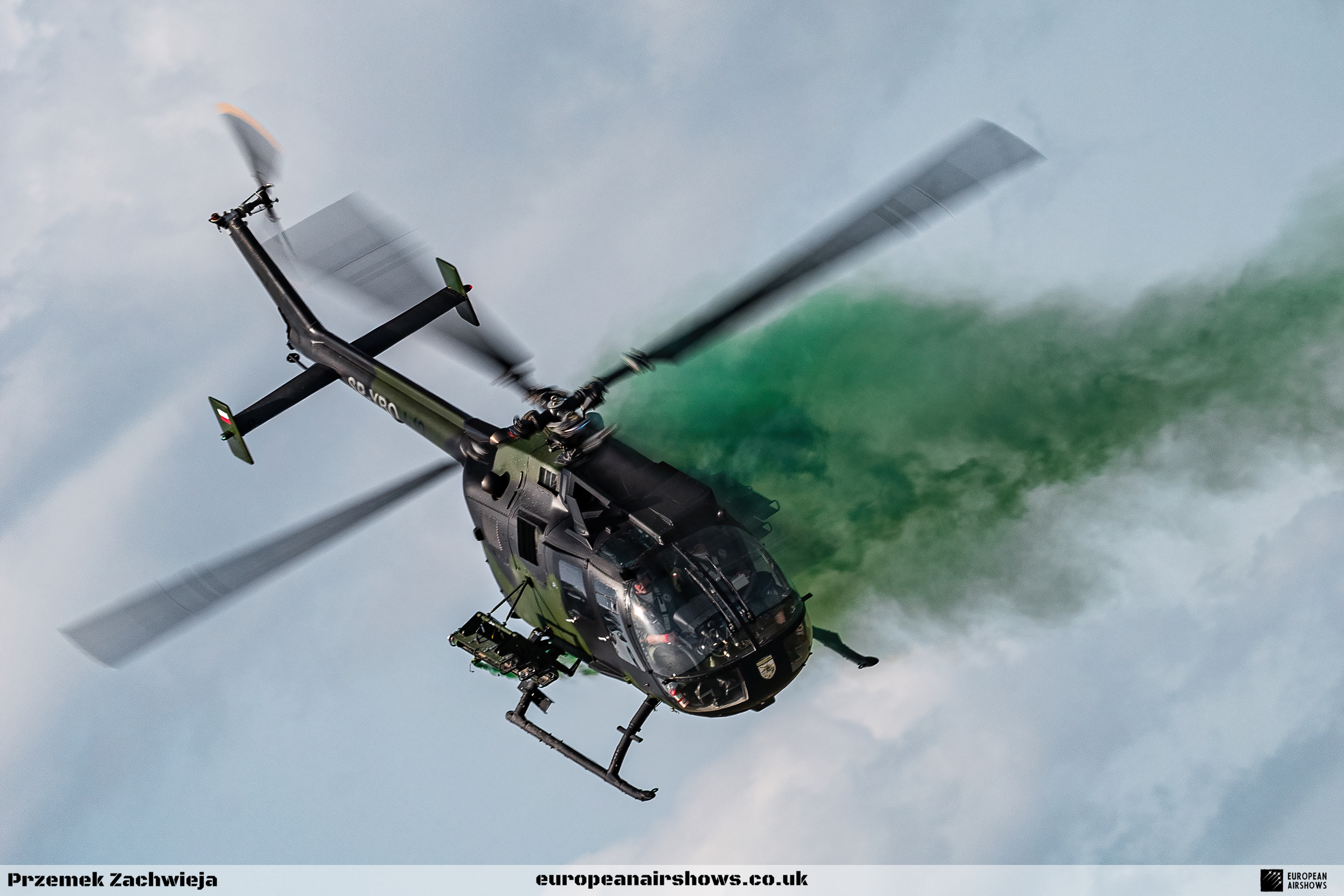
February 16 / MBB Bo 105 first flight
First Flight 16 February 1967
MBB Bo 105
The Messerschmitt-Bölkow-Blohm Bo 105 is a light, twin-engine, multi-purpose helicopter developed by Bölkow of Ottobrunn, West Germany. It was the first light twin-engine helicopter in the world and the first rotorcraft that could perform aerobatic manoeuvres such as inverted loops. The Bo 105 features a revolutionary hingeless rotor system, a pioneering innovation in helicopters when it was introduced into service in 1970. Production of the Bo 105 began at the then-recently merged Messerschmitt-Bölkow-Blohm (MBB).
The main production facilities for producing the Bo 105 were located in Germany and Canada; due to the level of export sales encountered, additional manufacturing lines were set up in Spain, Indonesia, and the Philippines. MBB became a part of Eurocopter in 1991, which continued production of the type until 2001. The Bo 105 was formally replaced in Eurocopter's product range by the newer Eurocopter EC135.
In 1964, development work began at Bölkow on the helicopter that would become the Bo 105, although work on the hingeless rotor it would use had begun earlier. On 16 February 1967, the second Bo 105A prototype conducted its maiden flight at Ottobrunn in Germany; the first public demonstration was held in May 1967. The test program was broken down into stages as the Bo 105 comprised a new airframe, new rotor system, and a new engine; thus the flying Bo 105 prototype was initially equipped with a main rotor from Westland Helicopter's Scout rotorcraft and a pair of Allison Model 250 turboshaft engines instead of their production counterparts. Sud Aviation worked with Bölkow on developing the rotorcraft; an Alouette II helicopter was modified with the Bo 105's rotor and used to test its performance envelope. The third Bo 105 prototype was equipped with the initial production standard MAN Turbo 6022 turboshaft engines; six pre-production Bo 105s were constructed for testing.
On 13 October 1970, the German Civil Aviation Authority certified the Bo 105; initial deliveries for the first customers, ADAC Air Rescue and the Bavarian State Police, took place shortly thereafter. In 1972, further type certification was granted by the Federal Aviation Administration (FAA) and the Civil Aviation Authority (CAA), enabling export orders from the United States and Britain respectively, which soon followed. In 1972, an improved version of the rotorcraft with more powerful engines, the Bo 105C, was developed; this model quickly superseded the Bo 105A. On 25 September 1973, the prototype Bo 106 performed its first flight, the Bo 106 shared many similarities to the Bo 105, the principal difference being a widened cabin area, capable of seating three abreast in the front row and four abreast in the rear of the cabin. However, nothing further came of the Bo 106 project.
In 1976, the Bo 105CB, equipped with more powerful Allison 250-C20B engines, was introduced. The Bo 105C was further developed to become the Bo 105CBS, the primary change being a fuselage stretch of 10 inches to meet American demand for emergency medical service (EMS) operations; this version was often referred to as the Bo 105 Twin Jet in the United States. US aerospace firm Boeing-Vertol served as a partner in the type's production and further development and marketed the BO 105 in the US. The Bo 105 CB and the Bo 105 CBS variants were also subject to license manufacturing agreements, leading to them being produced by the Philippine Aerospace Development Corporation in the Philippines, Indonesian Aerospace (IPTN) in Indonesia, and Construcciones Aeronáuticas SA (CASA) in Spain in addition to the main production line in Germany.
In 1984, the Bo 105LS was developed with the enlarged fuselage of the Bo 105CBS combined with more powerful Allison 250-C28C engines to increase the maximum take-off weight as well as hot-and-high flight performance; the Bo 105 LS was manufactured under a cooperative arrangement with Eurocopter Canada. Improvements and modifications to the Bo 105 LS continued until 1995.
Production of the Bo 105 by Eurocopter formally ended in 2001, principally due to the type having been superseded by the more modern Eurocopter EC135, itself a direct development from the Bo 105. By the end of production, 1,406 rotorcraft had been manufactured and delivered to operators in 55 nations worldwide.








